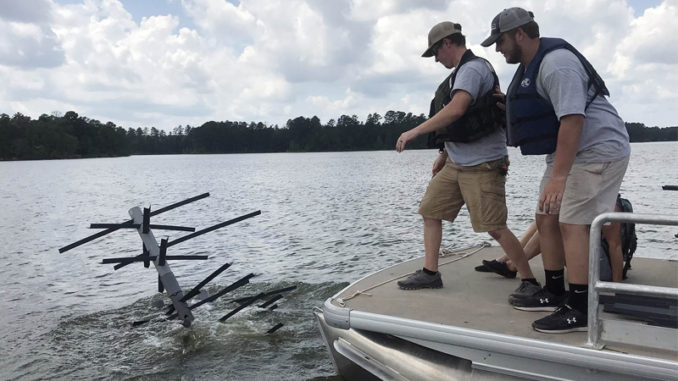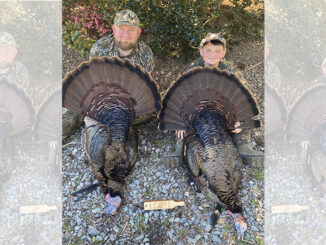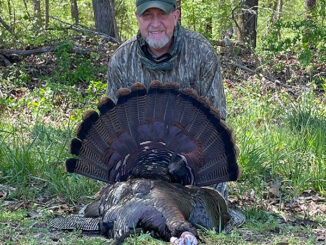
Attractors are placed to improve fishing opportunities
Fisheries staff with the NCWRC have been working to improve aquatic habitat in Harris Reservoir. They’re installing artificial fish attractor structures and planting native vegetation. This is part of an ongoing aquatic habitat enhancement project on Harris Lake.
Staff from Commission, Wake County Parks, Recreation, and Open Spaces, Duke Energy, NC B.A.S.S., and NC State University Basspack Bass Fishing Club, as well as volunteers, worked together to plant nine different species of native vegetation and install four types of artificial fish-attracting structures in the lake during June and July. They placed 150 PVC trees, 100 spiderblocks, 20 Shelbyville cubes, and 3 Mossback fish attractors around the lake in locations determined by anglers, fishing clubs and guides. Coordinates for the attractors can be found on the Commission’s website as an interactive map and for download.
The aquatic habitat plan attempts to improve aquatic habitat for fish and wildlife in Harris Lake. Especially as the Division of Water Resources (DWR) began implementing hydrilla control efforts in the lake in December 2018. These efforts included stocking sterile grass carp. These fish eat hydrilla. Other efforts include treating around boat ramps with herbicides to reduce the chances of hydrilla spreading to other waterbodies on boats, trailers, and other equipment.
The Sport Fish Restoration Program provides project funding
Hydrilla is an invasive aquatic weed that was first observed in the lake in 1988. Since that time, it has spread substantially throughout the lake. Harris Lake is a source population for the spread of hydrilla to other waterbodies in the state. And the long-term environmental and economic impacts can be devastating.
In conjunction with DWR’s hydrilla control efforts, in 2018 the Commission began the aquatic habitat enhancement project. This is scheduled for at least five years. Staff initially planted native vegetation at 14 sites and installed 50 artificial fish attractors in the lake. Biologists hope to establish approximately 30 acres of artificial and natural structures. They’d like to also add approximately 1 acre of founder colonies of native plants once the project has been completed. This year’s efforts added 26 vegetation sites and 273 artificial fish attractors to the total.
For more information about the Harris Habitat Enhancement Plan, please contact Clint Morgeson, Assistant District 3 Fisheries Biologist, at (919) 707-0339 or clinton.morgeson@ncwildlife.org.
The project is funded through the Sport Fish Restoration Program. This program utilizes state fishing license money and federal grant funds derived from federal excise taxes on fishing equipment and motorboat fuels.




Be the first to comment